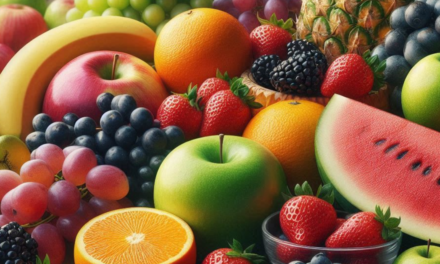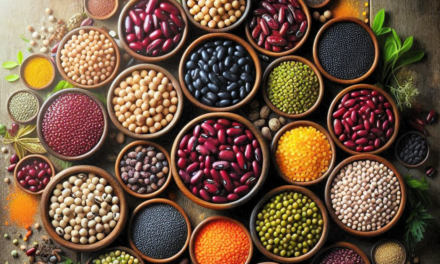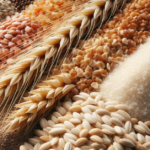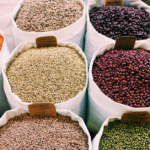Those of us with diabetes know all too well it requires diligent management, with dietary choices playing a pivotal role. Among the many foods that can aid in this journey, leafy greens stand out as an exceptional ally. Regardless of which diet plan we follow; leafy greens deserve a spot on our plates.
These powerhouse foods are not only known for their low glycemic index but also offer a wide range of advantages for individuals striving to maintain stable blood sugar levels.
The Nutritional Value of Leafy Greens
Leafy greens boast an impressive nutritional profile that makes them an ideal addition to a diabetic diet. Low in calories and carbohydrates, yet rich in essential vitamins, minerals, and dietary fiber, they provide a perfect balance of nutrients that support blood sugar control. Vitamins A, C, and K, as well as minerals like calcium and iron, contribute to overall health and well-being.
Leafy greens are a excellent source of antioxidants, such as lutein and zeaxanthin, which play a crucial role in maintaining eye health.
Spinach, for instance, is loaded with compounds that may help reduce inflammation and promote heart health, two key factors in diabetes management.
Glycemic Impact and Blood Sugar Control
One of the most significant advantages of leafy greens for diabetics is their low glycemic index. This characteristic means that they have a minimal impact on blood glucose levels, making them an excellent choice for individuals aiming to manage diabetes effectively.
The fiber, protein, and other nutrients in greens help slow the absorption of carbohydrates into the bloodstream, preventing rapid spikes in blood sugar levels.
Benefits of Leafy Greens for Diabetics
Incorporating leafy greens into the diet of individuals with diabetes can lead to improved blood sugar control, thus mitigating the risk of complications associated with the condition.
The antioxidants present in these vegetables can help in reducing oxidative stress and inflammation, factors linked to diabetes. Moreover, leafy greens contain compounds that have been demonstrated to lower the incidence of type 2 diabetes and enhance insulin sensitivity.
Their high fiber content is beneficial for weight management, promoting feelings of fullness and supporting a healthy metabolism. Magnesium-rich leafy greens, such as kale and Swiss chard, play a crucial role in insulin secretion and glucose control, highlighting their value in a diabetic diet.
Best Leafy Greens for Diabetics
When it comes to choosing the right leafy greens for a diabetic diet, there are several standout options.
Kale, spinach, and cabbage are particularly beneficial due to their low carbohydrate content and high nutritional value.
Broccoli and green beans stand out for their high fiber content, which can aid in blood sugar management. Asparagus and spinach are notable for their weight management benefits, crucial for individuals with diabetes.
Swiss chard and collard greens offer versatility in cooking alongside a rich profile of vitamins and minerals.
Arugula and watercress, with their unique flavors, contribute to the overall nutrient intake, making them excellent choices for enhancing a diabetic meal plan.
Incorporating Leafy Greens into a Diabetic Diet
There are several ways to increase the amount of leafy greens in your meals, including adding them to salads, blending them into smoothies, or serving them as healthy side dishes.
To make meal planning more interesting, try incorporating leafy greens as the star ingredient in diabetic-friendly recipes. It is important to balance these vegetables with other meal components to ensure a comprehensive diabetic diet.
Variety and Seasonality
Varying the types of leafy greens consumed ensures you get a wide array of beneficial compounds. Explore different colors and textures like crisp romaine, tender baby spinach, earthy kale, and peppery arugula. Focus on in-season local greens when possible for peak freshness and flavor.
Combining with Proteins
Pairing leafy greens with proteins like eggs, fish, poultry, tofu, and pulses is a particularly delicious combination. The protein enhances satiety and helps stabilize blood sugar levels even further when combined with the fiber in the greens. Try veggie-packed omelets, salads with grilled proteins, or sautéed greens with lentils.
Leafy Green Cooking Tips
The best cooking methods for leafy greens are sautéing, stir-frying, and briefly steaming. These methods help retain the nutrients, vibrant colors, and flavors of the greens while making them tender and palatable.
Sautéing
Sautéing is an excellent way to cook leafy greens like spinach, kale, chard, collards, and beet greens. Here are the key steps:
1. Heat a small amount of oil or broth in a skillet over medium-high heat.
2. Add minced garlic or shallots and sauté briefly until fragrant.
3. Add the greens in batches if needed and sauté for 2-5 minutes, stirring frequently, until wilted and tender but still bright green.[1]
4. Season with salt, pepper, lemon juice, or other desired flavors.[1]
Sautéing is quick, preserves nutrients, and allows you to add flavor accents like garlic, nuts, dried fruit, or vinegar.[1]
Stir-Frying
Stir-frying is ideal for heartier greens like kale, mustard greens, and bok choy. The high heat cooks them quickly while maintaining crunch and flavor.
1. Heat a wok or skillet over high heat with a small amount of oil.
2. Add the greens and stir-fry for 2-4 minutes until slightly wilted but still crisp.[2]
3. Add aromatics like garlic, ginger, or chili flakes towards the end.[2]
4. Finish with a splash of soy sauce or rice vinegar.
Steaming
Steaming is a gentle cooking method that preserves nutrients well. It works best for tender greens like spinach, chard, and beet greens.
1. Bring 1-2 inches of water to a boil in a pot with a steamer basket.
2. Add the greens to the steamer basket, cover, and steam for 2-5 minutes until just wilted.[3]
3. Transfer the greens to a bowl and toss with a bit of olive oil, lemon juice, salt, and pepper.
The key for any method is to cook the greens lightly and quickly to retain their vibrant color, texture, and nutrients.[1][2][3] Avoid overcooking, which can make them drab and mushy.
Beware of the Oxalates*
Certain leafy greens, like spinach and beet greens, contain oxalates that have been linked to the formation of kidney stones in some people. People who are susceptible to oxalate problems can control their intake of high oxalate vegetables or choose low oxalate alternatives such as romaine lettuce, arugula, and bok choy.
Managing Diabetes with a Plant-Based Diet
A diet rich in plant-based foods, including a variety of leafy greens, plays a significant role in managing diabetes. Such a diet, low in processed foods, can lead to improved blood sugar levels and potentially reduced dependence on diabetes medications. Consulting with a dietician to devise a balanced, diabetes-friendly meal plan that incorporates leafy greens is advisable.
Grasping the concept of bioavailability is crucial because the nutrients in leafy greens are more effectively absorbed when eaten with healthy fats such as olive oil or avocado. Additionally, choosing a plant-based diet can have environmental advantages, aiding in sustainability and reducing one’s carbon footprint.
Takeaways
Leafy greens offer numerous benefits for individuals managing diabetes, from blood sugar control to supporting overall health. By exploring different leafy greens and experimenting with new recipes, those with diabetes can enrich their diet in flavorful and nutritious ways. Emphasizing a holistic approach to diabetes management, which includes diet, exercise, and regular medical check-ups, is essential for achieving optimal health outcomes.
1. Non-starchy vegetables are low in carbs, high in fiber, and packed with essential vitamins, minerals, and antioxidants, making them a powerhouse for better blood sugar control.
2. Incorporating a variety of colorful non-starchy veggies into your daily meals and snacks can aid weight management, improve insulin sensitivity, and reduce inflammation – all crucial factors in managing diabetes.
3. Meal planning and prepping are key to successfully incorporating more non-starchy veggies. Start with simple swaps, like adding veggies to omelets or blending them into smoothies, and gradually build up from there.
4. Don’t be discouraged by challenges or setbacks. Seek support from loved ones, healthcare professionals, or online communities to overcome obstacles and stay motivated.
5. Embrace non-starchy veggies not just for their health benefits, but also for their versatility in recipes and their ability to add vibrant colors and flavors to your meals.
6. Remember, small steps can lead to big changes. Start by adding one extra serving of non-starchy veggies to your day, and watch as your energy, vitality, and overall well-being improve.
Keep these takeaways in mind as you embark on your journey to make non-starchy veggies a staple in your diabetes-friendly diet. Your body and taste buds will be grateful, and you’ll be well on your way to better health and diabetes management.
Cooking Tips Citations:
[1] https://theveganatlas.com/the-most-basic-best-way-to-cook-leafy-greens-with-lots-of-variations/
[2] https://fruitsandveggies.org/expert-advice/cooking-method-recommend-leafy-veggies/
[3] https://naturalkitchenschool.com/get-your-green-on-cooking-with-dark-leafy-vegetables/
[4] https://www.reddit.com/r/Cooking/comments/vmsv1a/whats_the_bestyummiest_way_prepare_leafy_greens/
[5] https://www.bhg.com/recipes/how-to/cooking-basics/how-to-cook-greens/
Oxalates are naturally occurring compounds found in many plant-based foods like vegetables, fruits, nuts, grains, and legumes. They are organic acids that can bind to minerals like calcium, iron, and magnesium in the digestive tract, potentially reducing the absorption of these nutrients.[1][2][3]
Some key points about oxalates:
– They are produced by plants as well as synthesized in the human body as a waste product.[1][2]
– Foods highest in oxalates include spinach, beets, rhubarb, almonds, soy products, wheat bran, and certain beans.[1][3][5]
– Oxalates can bind to calcium and other minerals in the gut and kidneys, forming insoluble compounds like calcium oxalate which can lead to kidney stones in susceptible individuals.[1][2][3][4]
– Most people can consume moderate amounts of oxalates without issues as excess oxalates are typically excreted in urine or broken down by gut bacteria like Oxalobacter formigenes.[1][2][3]
– However, those prone to kidney stones, with impaired gut function, or certain digestive disorders may benefit from limiting high-oxalate foods to reduce oxalate absorption.[1][2][3]
– Cooking methods like boiling and soaking can help reduce the oxalate content of foods.[5]
So in summary, oxalates are natural plant compounds that can interfere with mineral absorption and potentially increase kidney stone risk in some people, but are generally not a major concern for most when consumed in moderation as part of a balanced diet.[1][2][3]
Oxalate Citations:
[1] https://www.chhs.colostate.edu/krnc/monthly-blog/should-i-be-avoiding-oxalates/
[2] https://www.healthline.com/nutrition/oxalate-good-or-bad
[3] https://www.webmd.com/diet/foods-high-in-oxalates
[4] https://pubmed.ncbi.nlm.nih.gov/24393738/
[5] https://www.medicalnewstoday.com/articles/oxalic-acid
You can find a list of leafy greens to consider adding to your diet here.
###
Remember, proactive self-care matters. Every step we take, every decision we make to better manage our diabetes makes a difference in how well and how long we live. Choose wisely. Live long, love life and be well.
The information on this site is not intended or implied to be a substitute for professional medical advice, diagnosis or treatment. The information on this site is for informational purposes only and is not intended to diagnose, treat, or cure any type of disease or condition. Diabetes Control Today does not guarantee any results for your specific situation. In support of our website, we may share resources offered by trusted partners. If you purchase products from any of these partners, the owners of this site may receive a portion of the proceeds. These affiliations allow us to continue bringing you valuable, potentially life-changing content.


























